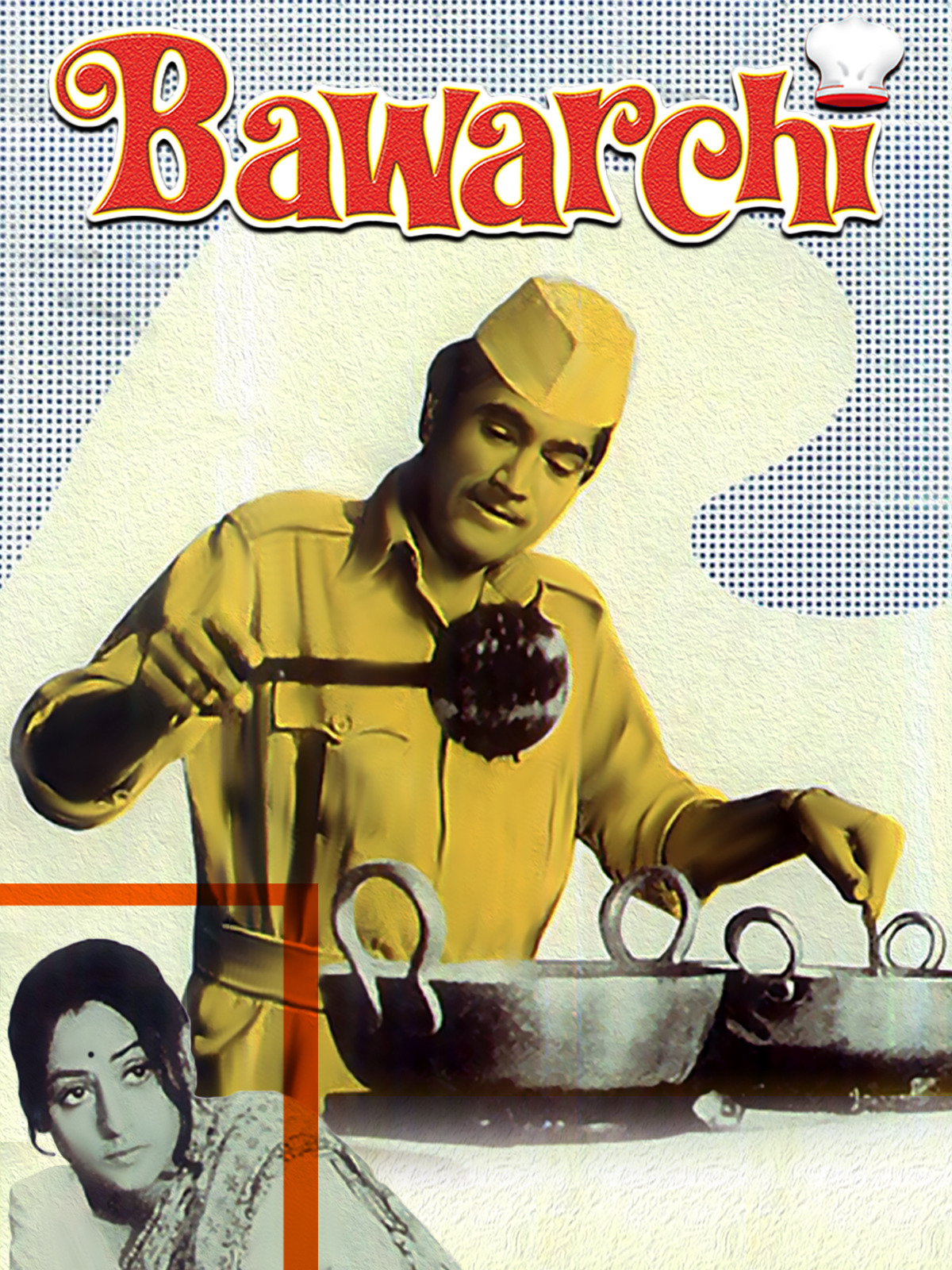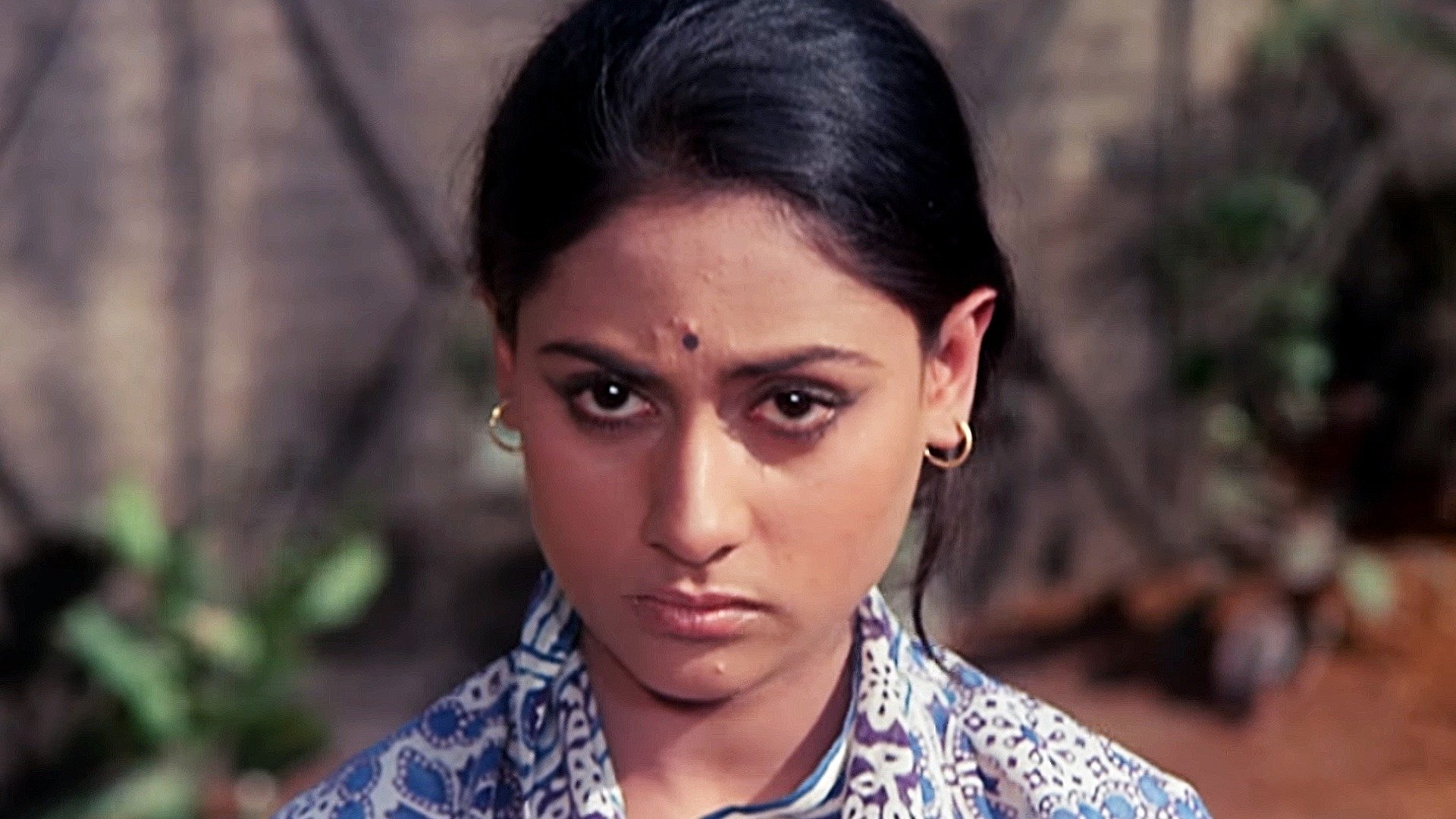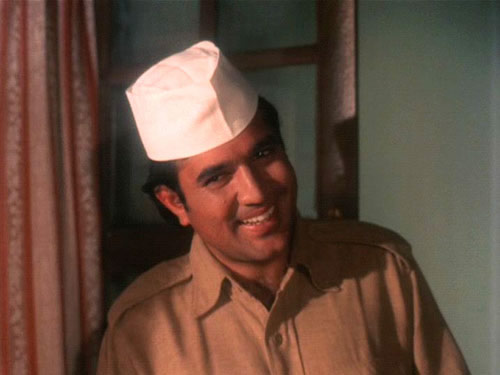– An article by Shivani Gadre
The movie ‘Bawarchi’ doesn’t have fancy starting or ending credits. Instead, it introduces the people who acted in and worked on the film in a way that’s like a stage play, with none other than Amitabh Bachchan as the narrator. This is just one way that ‘Bawarchi’ is special, even though its story is pretty normal. ‘Bawarchi’ was released in 1972, directed by Hrishikesh Mukherjee and also produced by him along with N.C. Sippy and Romu N. Sippy. The ‘Bawarchi’ was ranked as top-ten highest-grossing films of the year of 1972. The dialogues of the ‘Bawarchi,’ a comedy-drama film, are penned by Gulzar. The film was a remake of Rabi Ghosh starrer Bengali film ‘Galpo Holeo Satti’ (1966) by Tapan Sinha.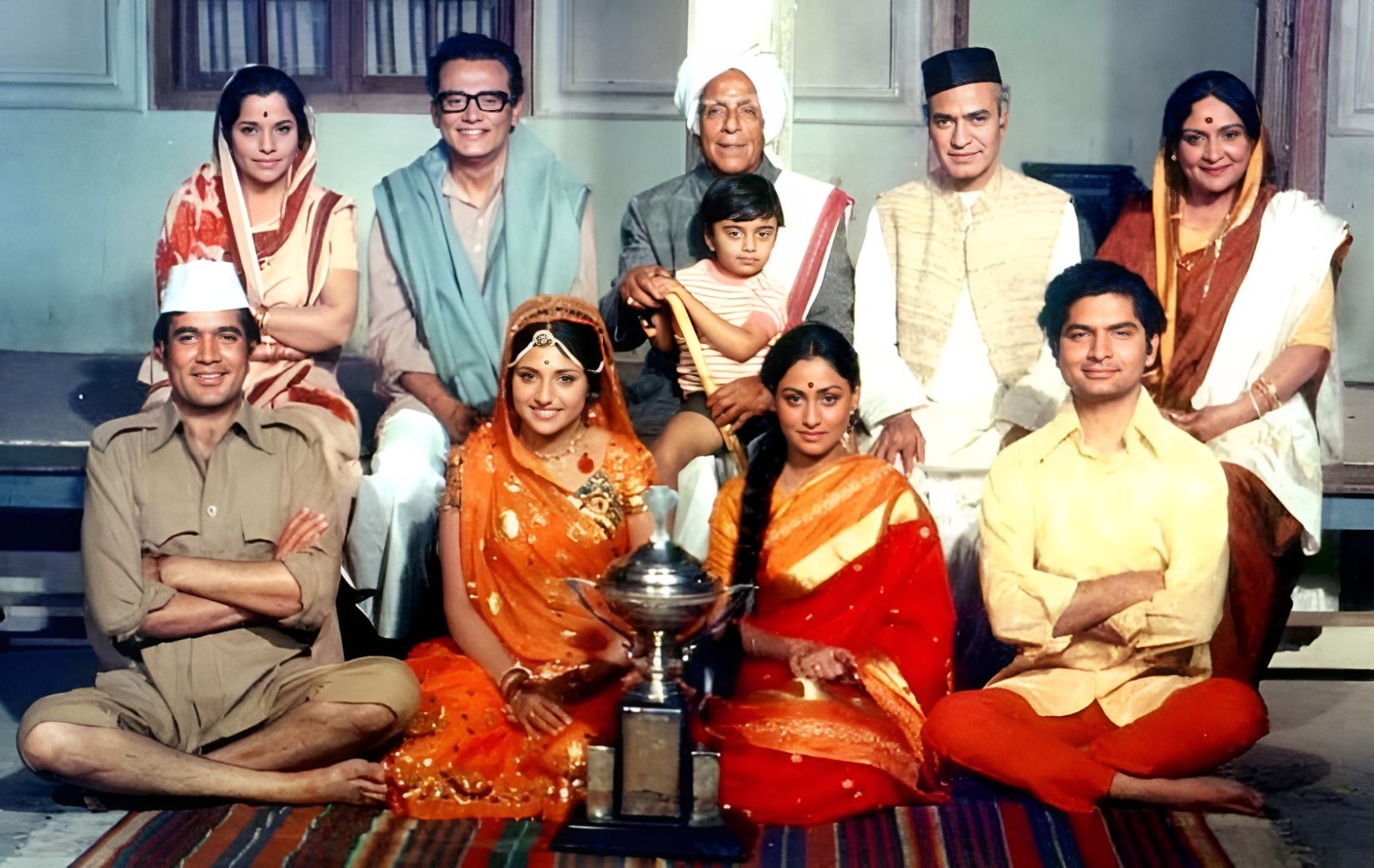
The story of ‘Bawarchi’ is about a family called the Sharmas who live in a house named ‘Shanti Niwas’ (Abode of Peace), even though their family life is not peaceful at all. But when a new cook named Raghu (played by Rajesh Khanna) comes into their house with a positive attitude, things start to change. The Sharma family begins to get along and care for each other again, which is different from how they used to act. The story keeps showing how Raghu is always kind and helpful, which leads to a moment of doubt near the end where people wonder if he has some hidden plan.
Untangling the shades and emblems:
Hrishida is famously known to have a trademark style of warmth and simplicity with movies like Anand (1971), Bawarchi (1972) and many other his masterpieces.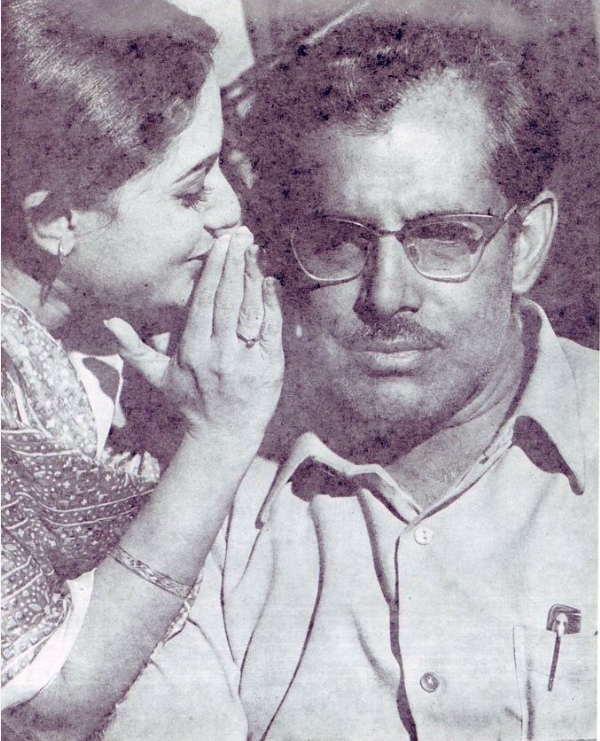
The movie ‘Bawarchi’ shows how people think women should behave and how men are expected to act, providing an insight into what was considered normal for women in the year 1972. For instance, Shivnath Sharma, also known as Daduji (played by Harindranath Chattopadhyay), often makes comments about his daughters-in-law and how they behave. The daughters-in-law are criticized for their behavior, and their behavior is considered a testimony of their ideality. The sons, Ramnath and Kashinath, also get criticized for putting their wives before everything else.
Even Krishna’s (played by Jaya Bhaduri) liking towards dancing is associated with the act of entertaining her husband after marriage. As most of the times, after marriage, husbands might become less interested in their wives. So, Krishna decides to learn dancing so she can dance for her husband. She hopes this will keep him interested in her. This makes us wonder if women’s likes and actions are only seen as ways to make men happy. Are women’s interests and actions only valued if they entertain men?
‘Bawarchi’ also remarks on unemployment issue during that time, through the scene where teachers of school are discussing the news of a literate youth who works as a cook or servant in house to gain the trust of employers and then robs them in the end, it reflects the condition of the youths at the time when the movie was released. As it was hard to be employed even with the qualifications due to the poverty rate and unemployment in the nation, which were the result of many socio-political events of that time. As the Bangladesh War had just ended a few months before the release of the movie. During that time, India was struggling with poverty and backwardness as India was recovering from the 1960s draughts, which led to food imports and one of the biggest devaluations of the currency in 1966. The draughts led to upsetting the economy’s balance and a slowdown in economic growth after 1965–66. Following this, Indira Gandi emerged victorious in the 1971 general elections with the slogan “Garibi Hatao.”
Vishwanath Shivnath Sharma (played by Asrani), the youngest son of Daduji, works as a film music director. He’s shown copying English songs and putting Hindi words to them. This points out how Hindi cinema sometimes struggles with being original.
The Sharma family in the ‘Bawarchi’ acted as a microcosm of the diversity of our nation. ‘Shanti Niwas’ highlights the syncretic quality of India. Despite being different and flawed, Raghu helped the Sharma family to appreciate and accept each other more so they could live happily in their abode, ‘Shanti Niwas.’
Simplicity is the one quality that Raghu has exhibited throughout the film. Simplicity is not about a lack of depth or meaning but rather about making things clear and easy to understand by getting rid of extra stuff and helping to see what’s really important.
After the movie ends, a question arises: Do we require an outsider to prompt us to find our own value? The microcosm portrayal in ‘Bawarchi’ sheds light on the reality that we Indians often seek validation from the West, whether it’s about our lifestyle, practicing yoga, or even our food habits.
“It is so simple to be happy, but it is so difficult to be simple.”

